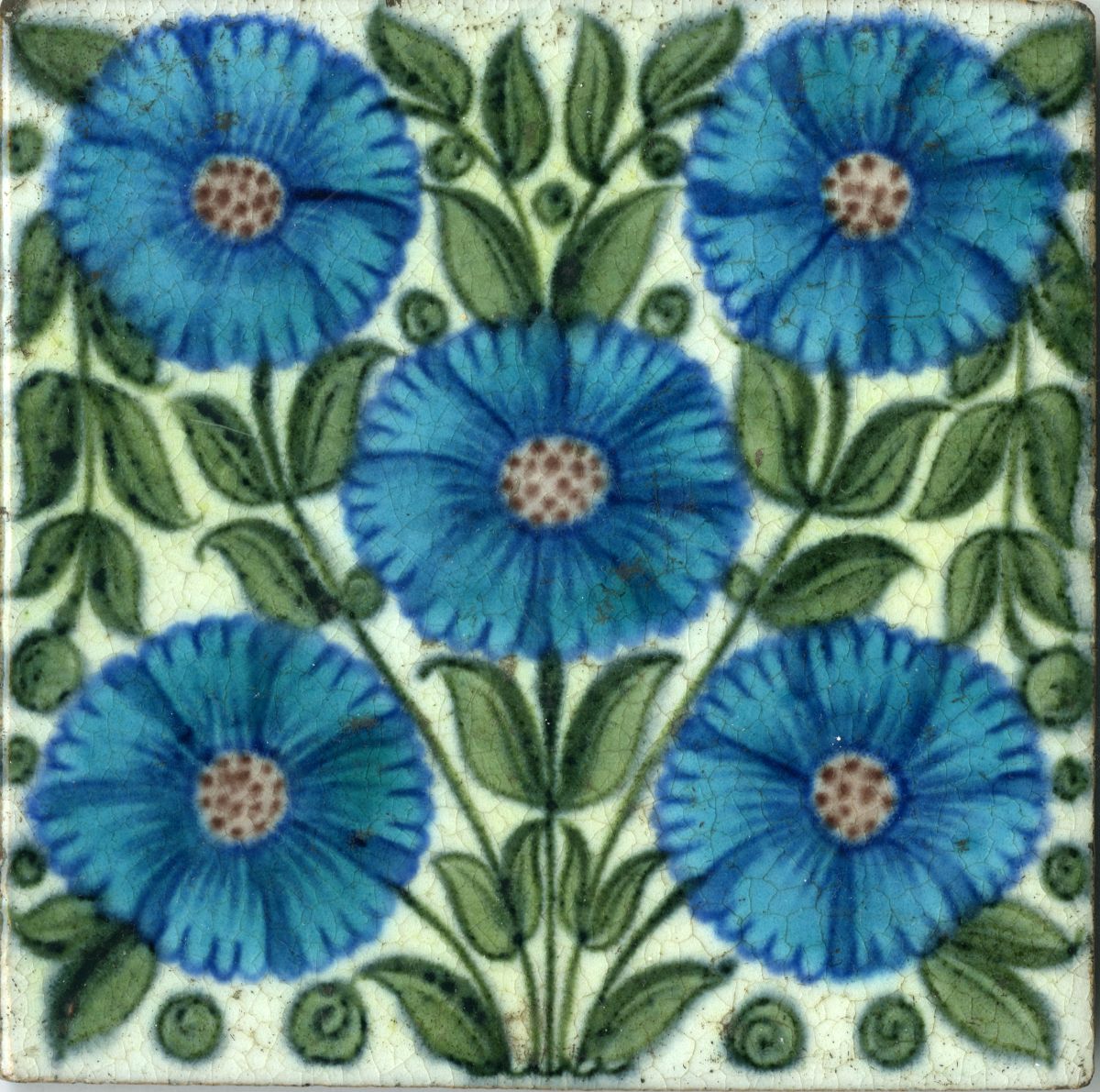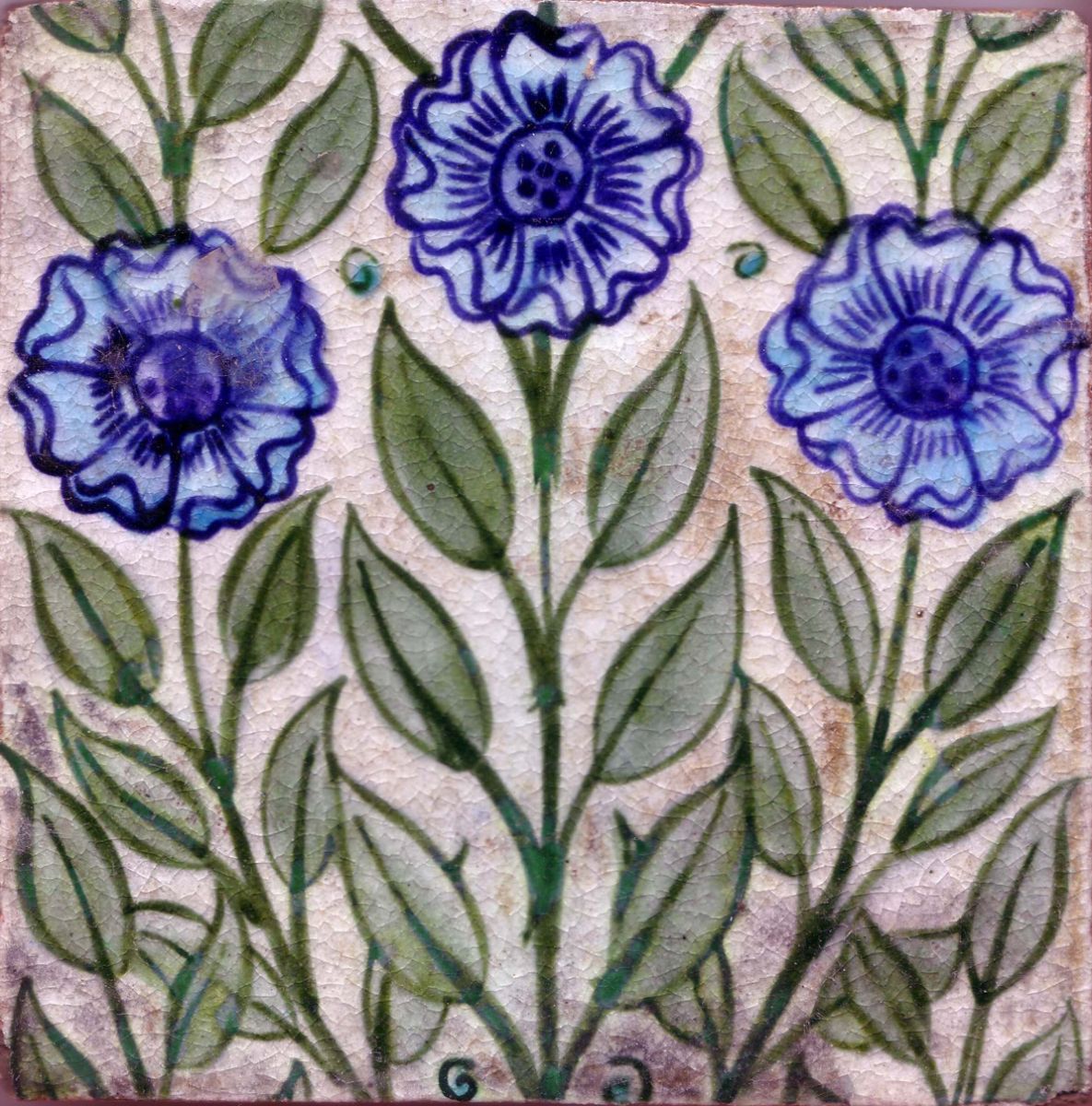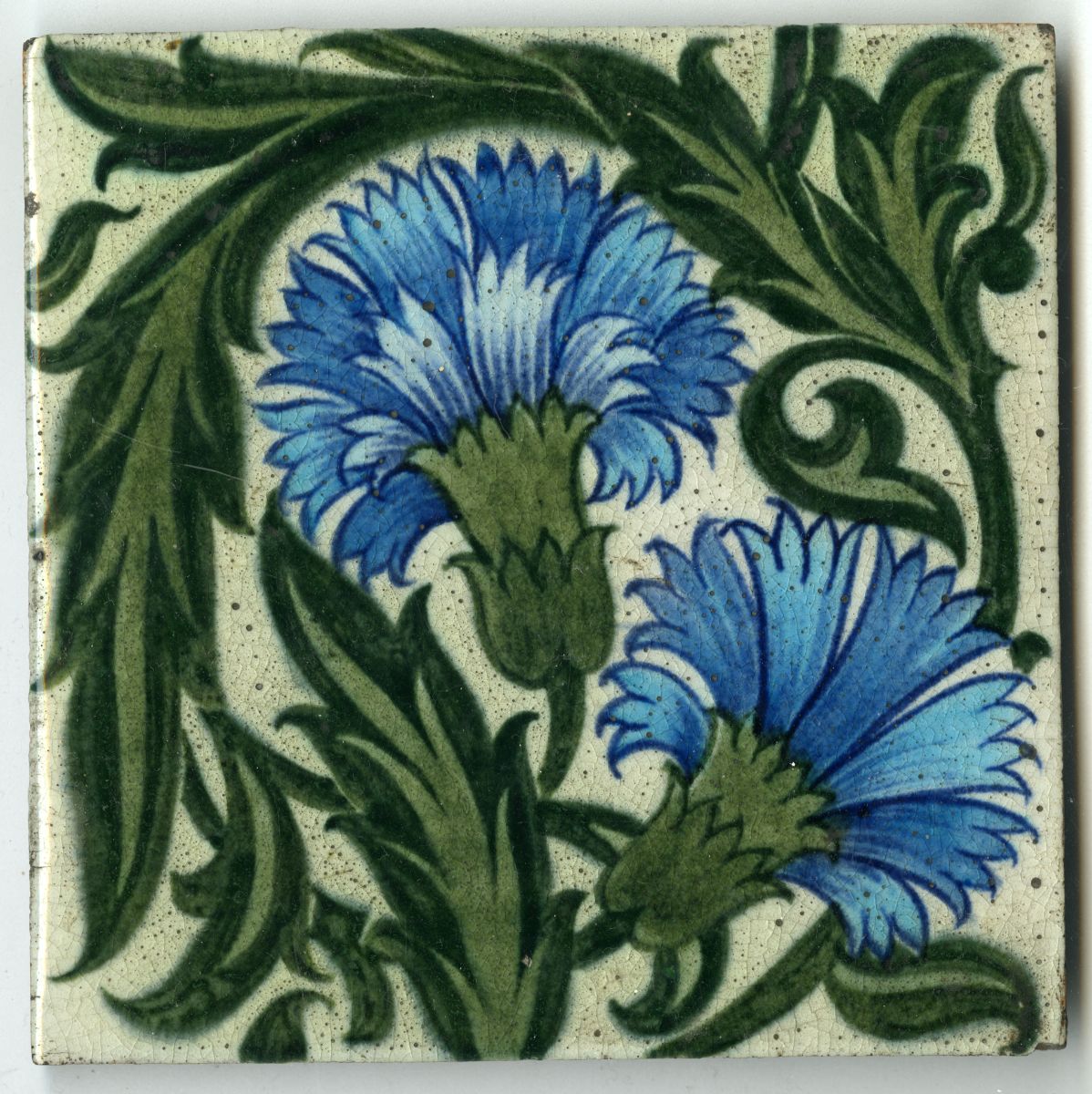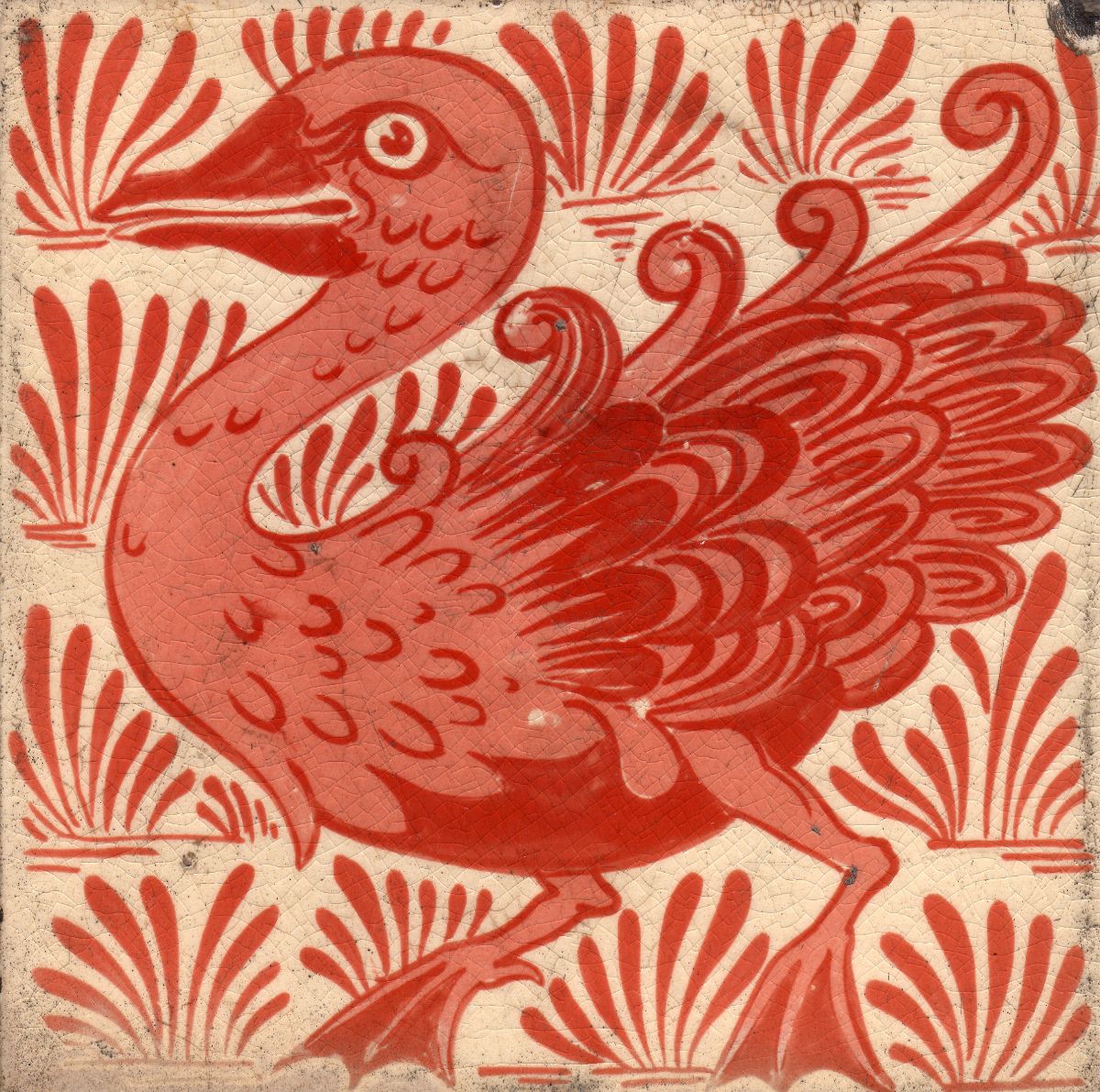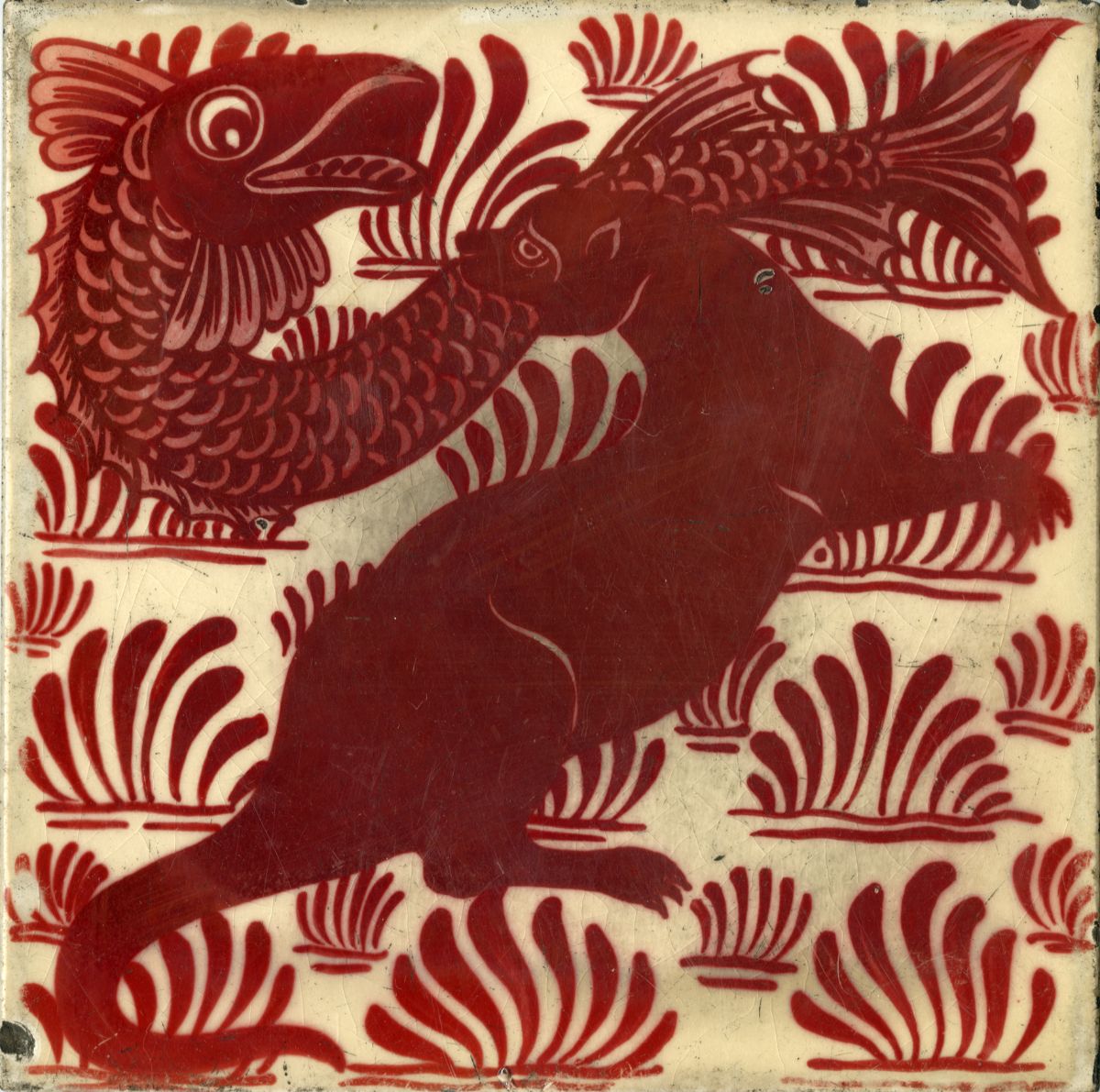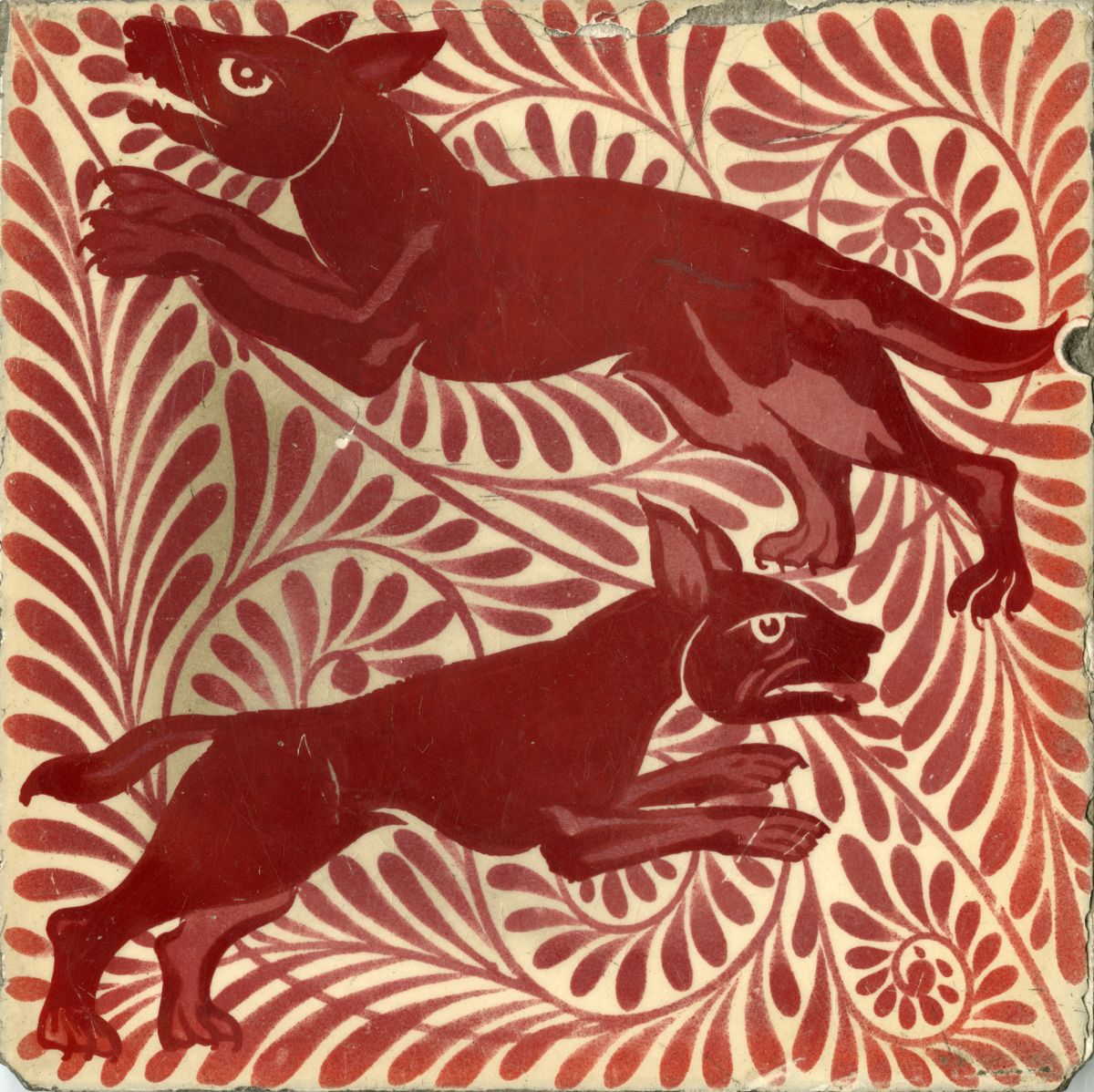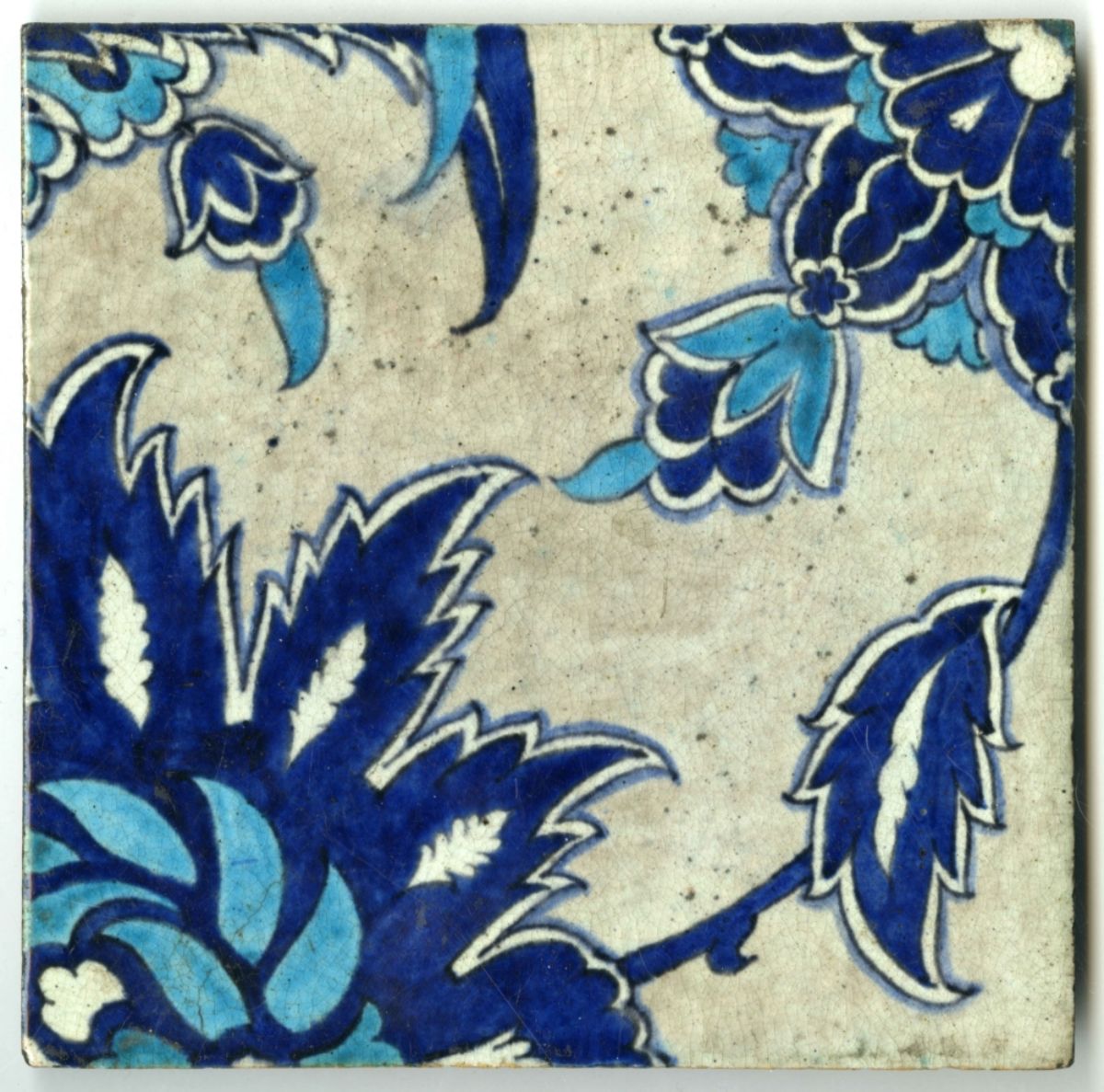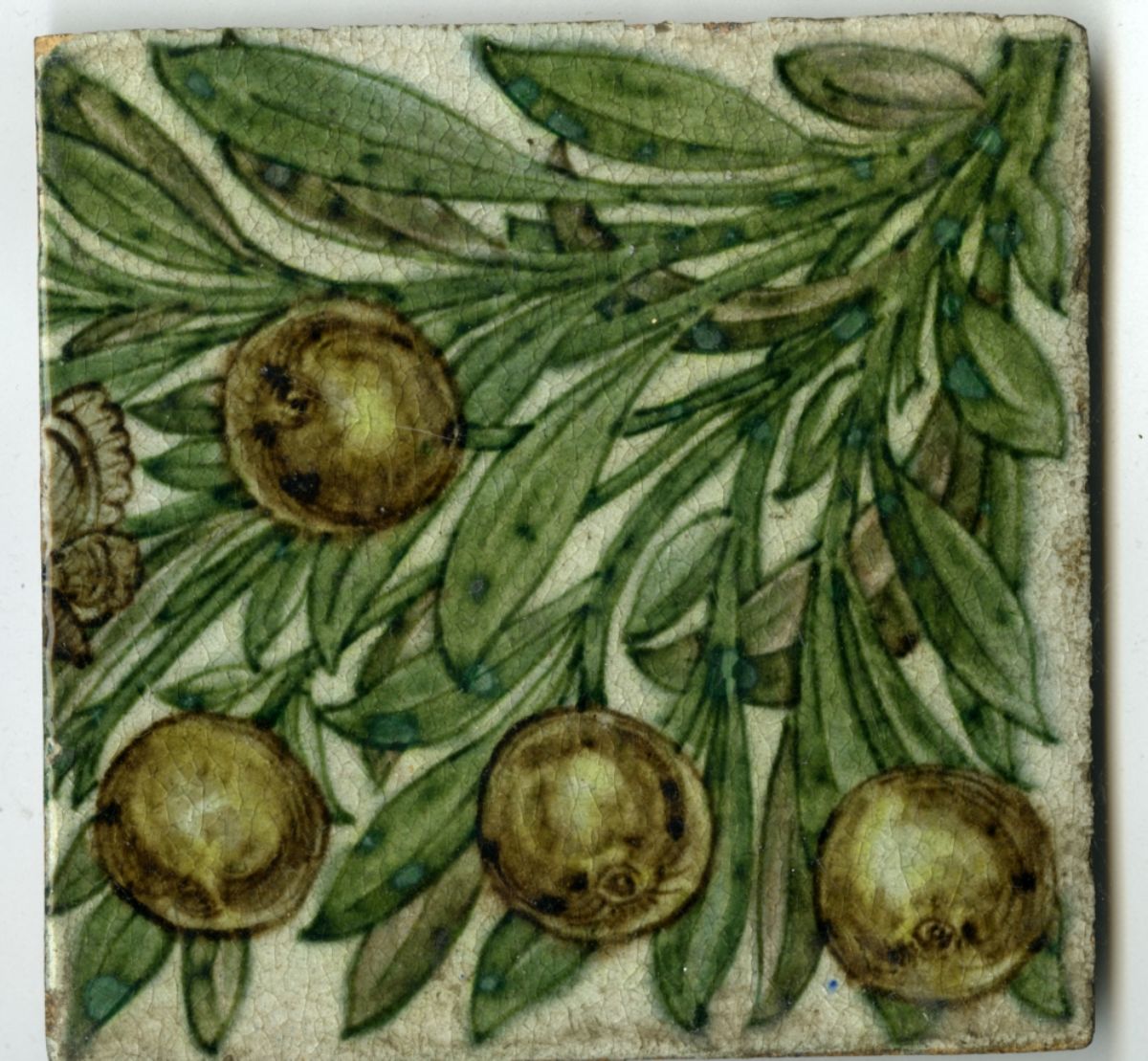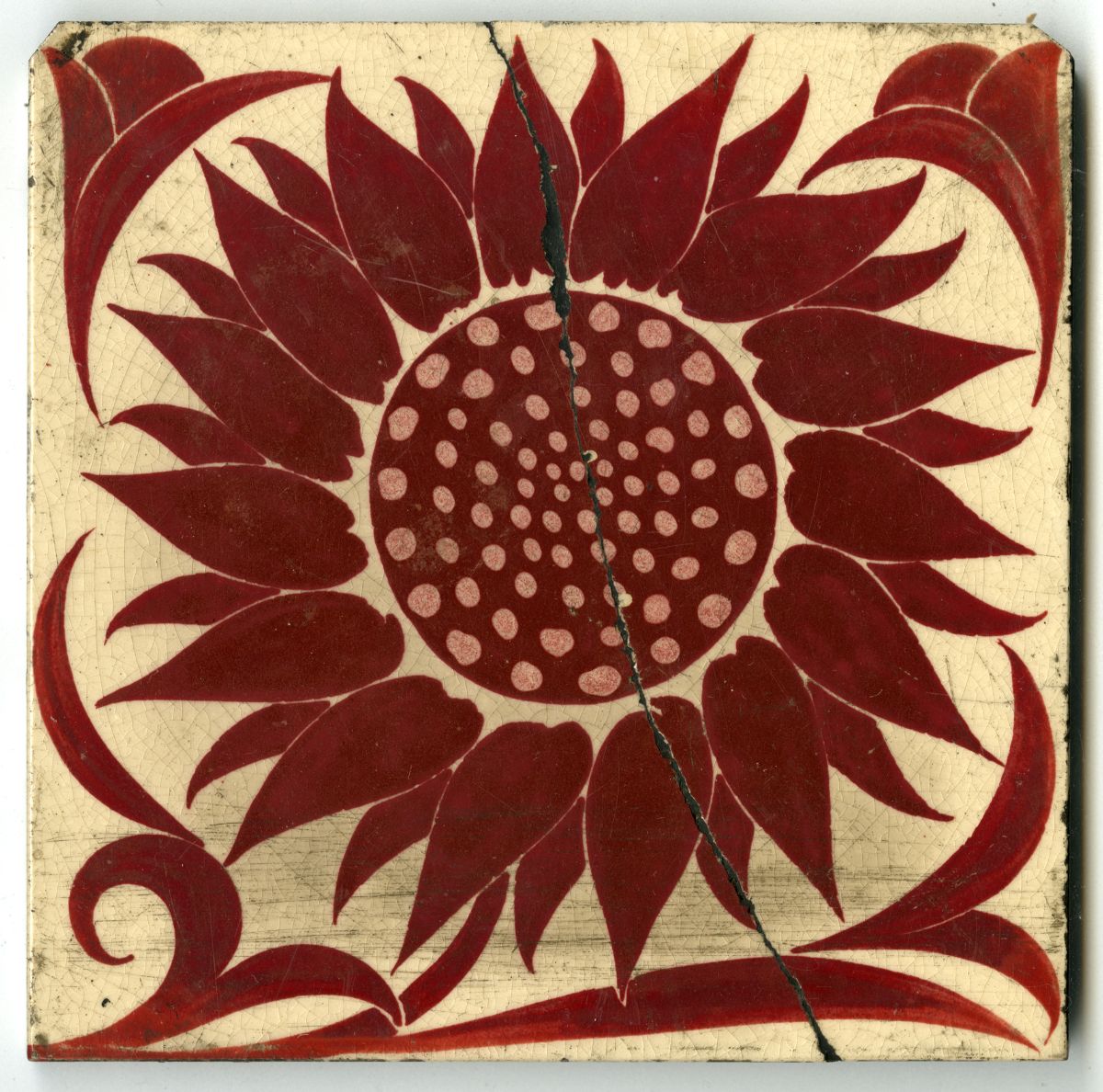The William De Morgan Tile Library
The Tile Library is an exciting new chapter in the partnership between the De Morgan Foundation and Wightwick Manor. With generous funding from the Mander Trust, an attic space in the Malthouse Gallery building at this National Trust property has been transformed into a bespoke display space for William De Morgan’s tiles in the De Morgan Collection.
For year, over 400 unique tiles by William De Morgan have been held in storage. Although safe and well conserved, it was not possible for the public to see them. The redevelopment of this unique space at Wightwick Manor has allowed the De Morgan Foundation to display all of the tiles in its collection for the first time.
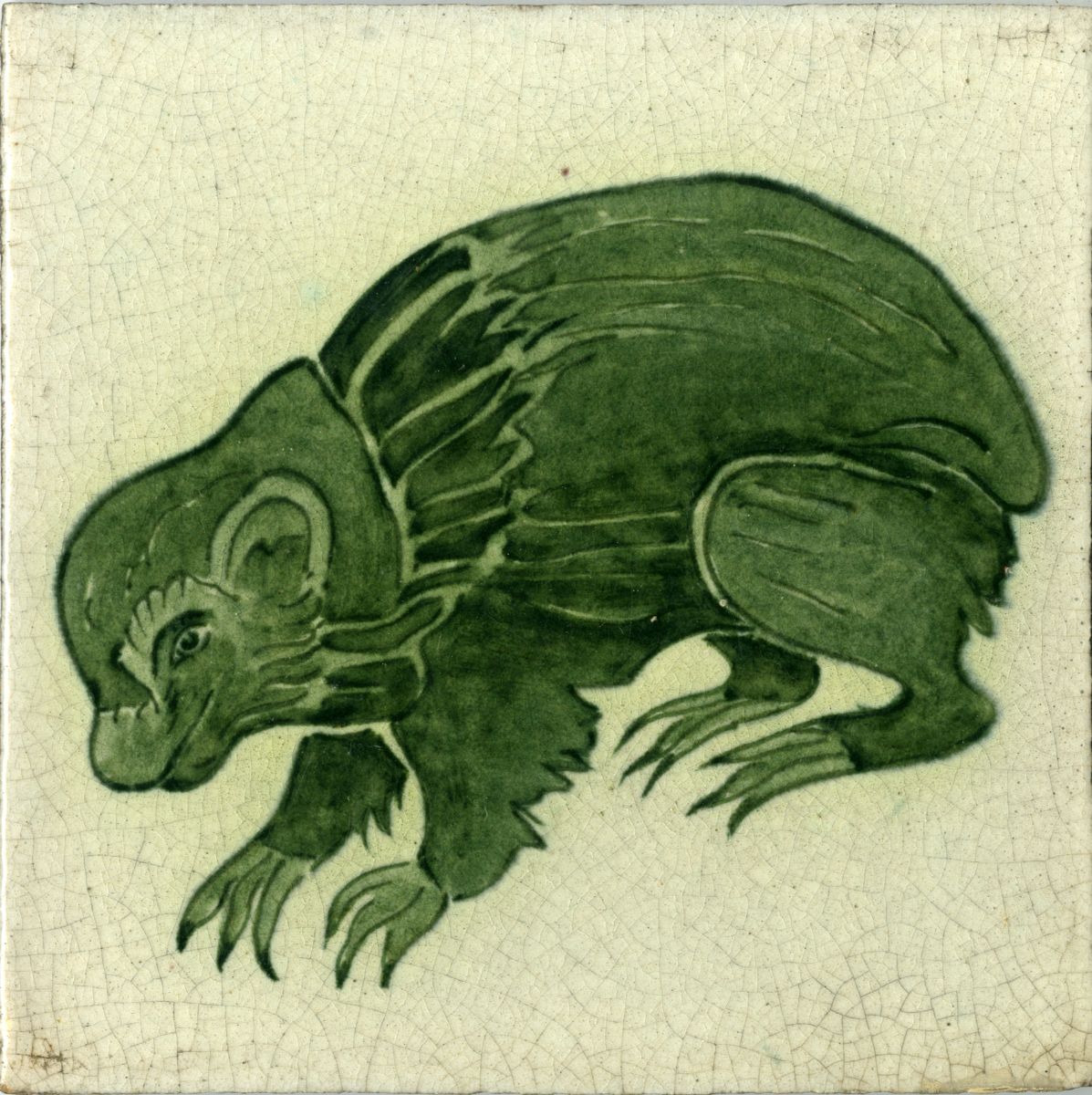
Marmot Tile (c.1889)
In the realm of decorative arts, William De Morgan is well known for his creativity and innovation, particularly in the field of ceramic tiles. Born in 1839, De Morgan was a Victorian-era artist renowned for his remarkable contribution to the Arts and Crafts movement. His legacy endures through his intricately designed and vividly coloured tiles, particularly his glistening lustreware, each a testament to his unique artistic vision and exceptional craftsmanship.
William De Morgan initially embarked on his artistic journey as a stained-glass artist. However, he soon shifted his focus to ceramics, a decision that would shape his artistic legacy. In collaboration with the esteemed designer and writer William Morris, De Morgan became an integral part of the Arts and Crafts movement, which sought to revive traditional craftsmanship in the face of industrialisation.
De Morgan’s tiles are a fusion of various influences, including Islamic, Persian, and Hispano-Moresque designs. His fascination with the Middle Eastern and Islamic ceramic traditions is evident in the intricate geometric patterns and vibrant color palettes that characterize many of his tile creations. The use of cobalt blue, turquoise, and rich earth tones reflects his admiration for Persian and Islamic aesthetics.
In 1873, William De Morgan established De Morgan & Co. and primarily sold painted tiles from his early premises in Chelsea, London. His designs were so popular that they were commissioned by everyone from the artist Frederic, Lord Leighton for his majestic Holland Park home (now Leighton House Museum) to P&O ocean liners who ordered tiles for over 12 luxury interior decorative schemes.
De Morgan’s tile designs often feature fantastical creatures, mythological scenes, and floral patterns, demonstrating his keen interest in medieval and Renaissance art. The Tile Library displays De Morgan’s tiles in colour order, so you are free to make your own connections and spot the differences between the glazed surfaces and De Morgan’s wide range of influences.
De Morgan’s fabulous Iznik Tiles, inspired by the 15th century ceramics he worked with at Leighton House will be on display for the first time. They are a fantastic example of how De Morgan adapted designs to create his own beautiful artworks. The original design worked over two tiles, but De Morgan’s design works over four so he has expanded the original design.
Designs have been placed on display which have never been seen by the public before. For the first time we have noticed that the fruit and branch tile has a butterfly on the extreme edge, meaning it is probably part of a larger panel.
Due to the new Tile Library, we can now display the beautiful ‘Sunflower Tile’. This Aesthetic movement emblem was proudly worn by Oscar Wilde, who inspired the creation of Wightwick Manor with his 1885 ‘House Beautiful’ Lecture.
The ‘Tile Library at Wightwick Manor’ promises to be a captivating journey through the intricate world of De Morgan’s tile artistry. Don’t miss the opportunity to witness these masterpieces in person and delve into the rich history behind each tile. We look forward to welcoming you to this enchanting exhibition and sharing the joy of these extraordinary creations with our community.
Donate
We rely on your generous support to care for and display this wonderful collection


